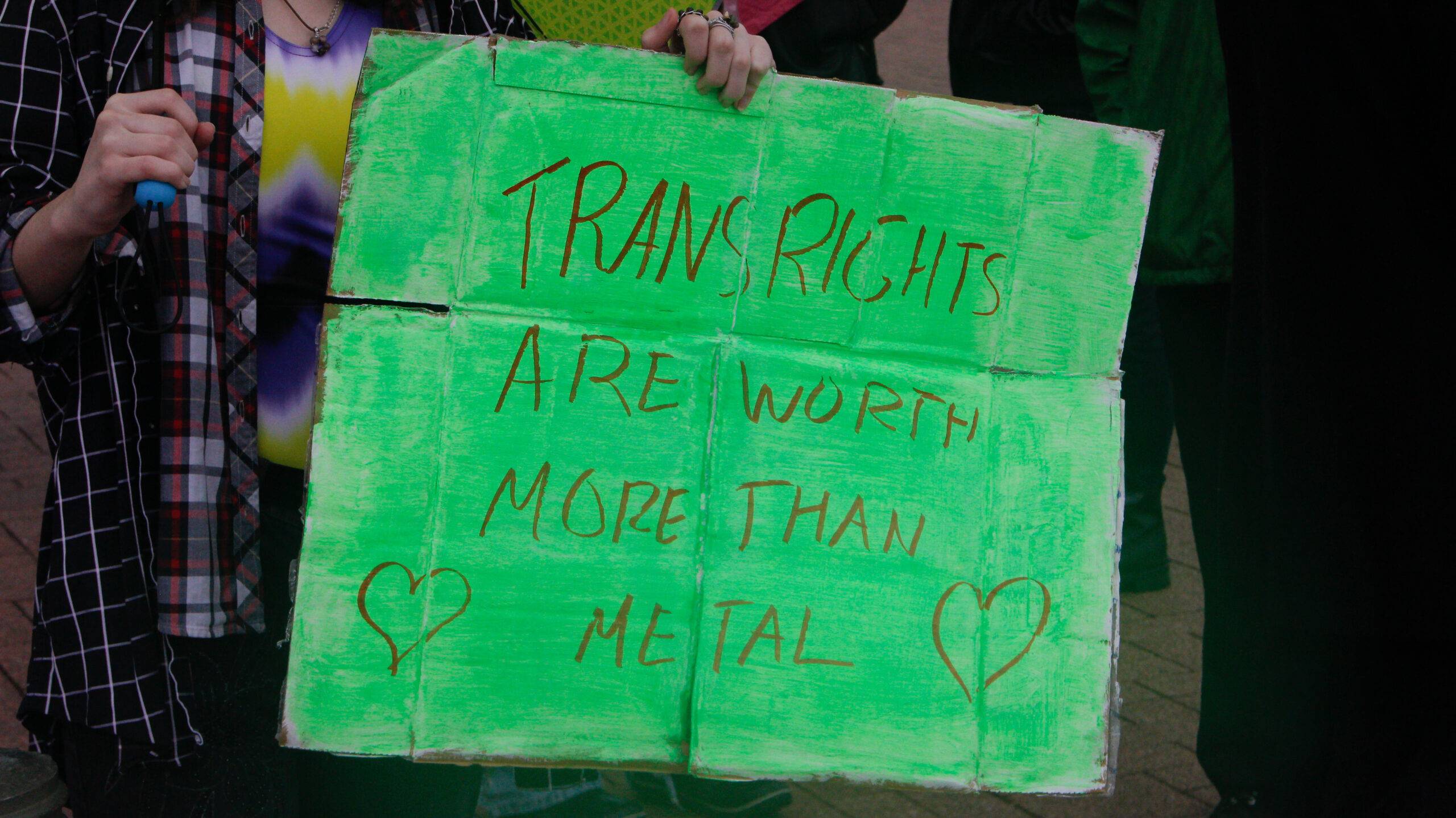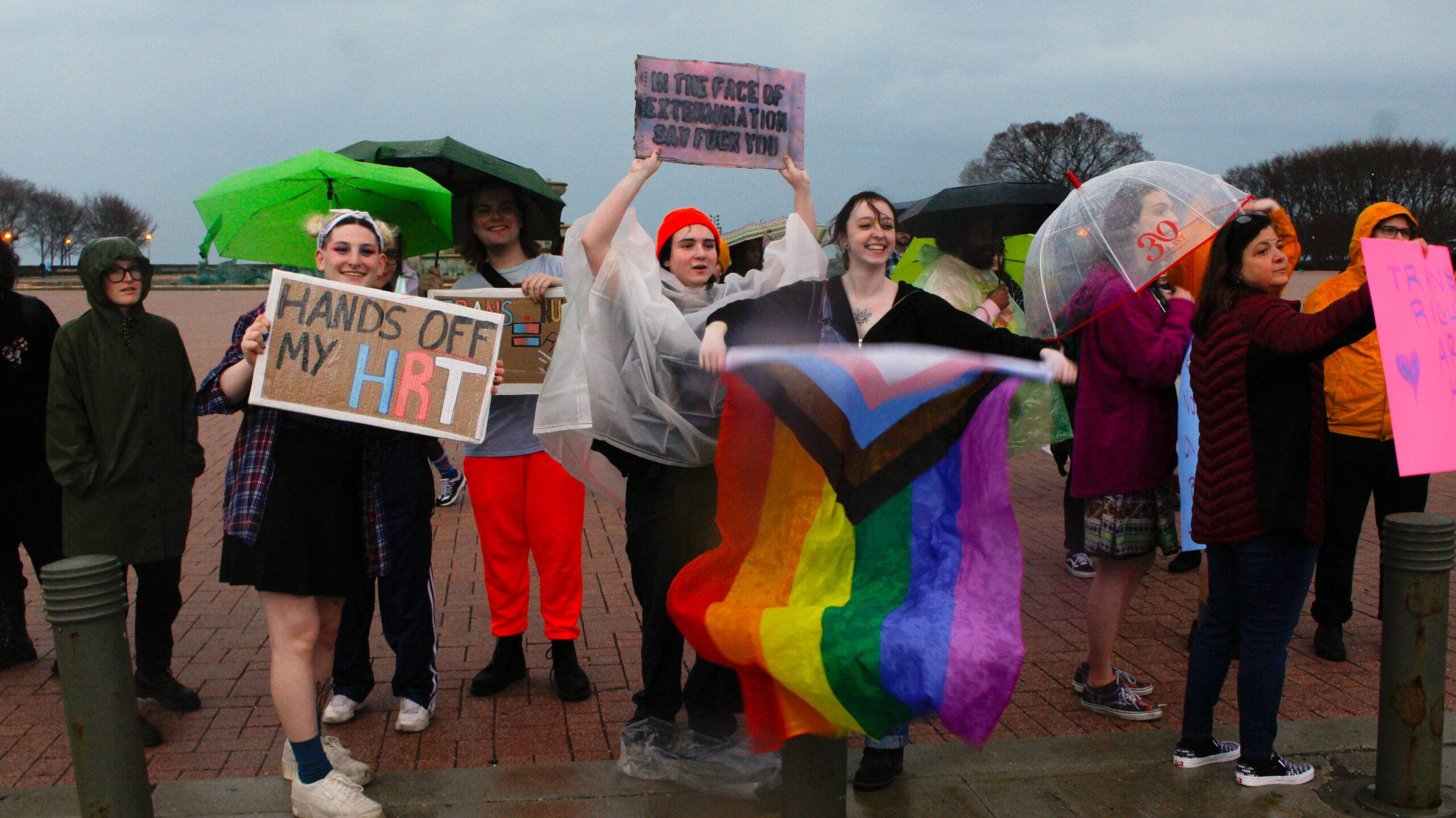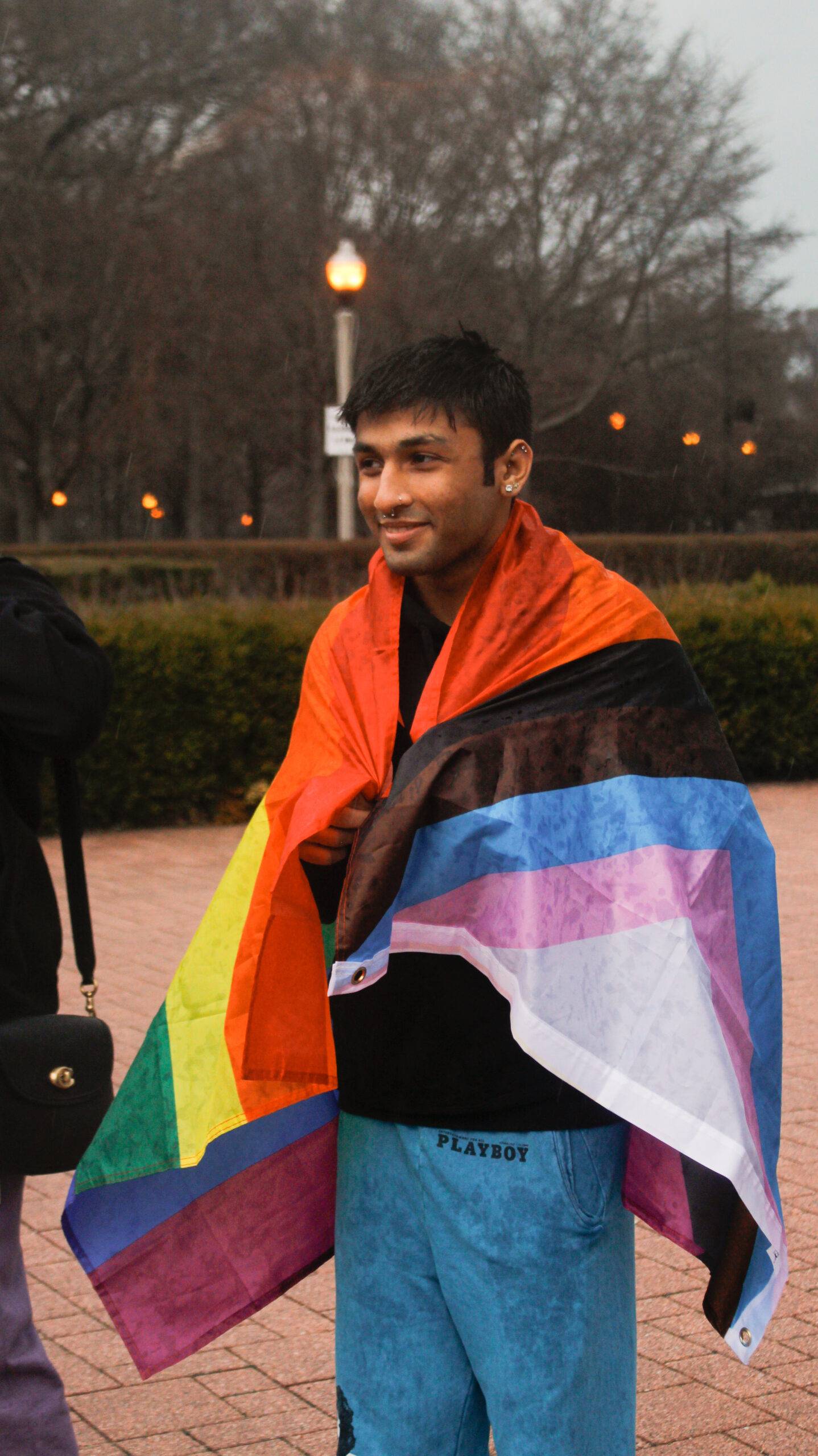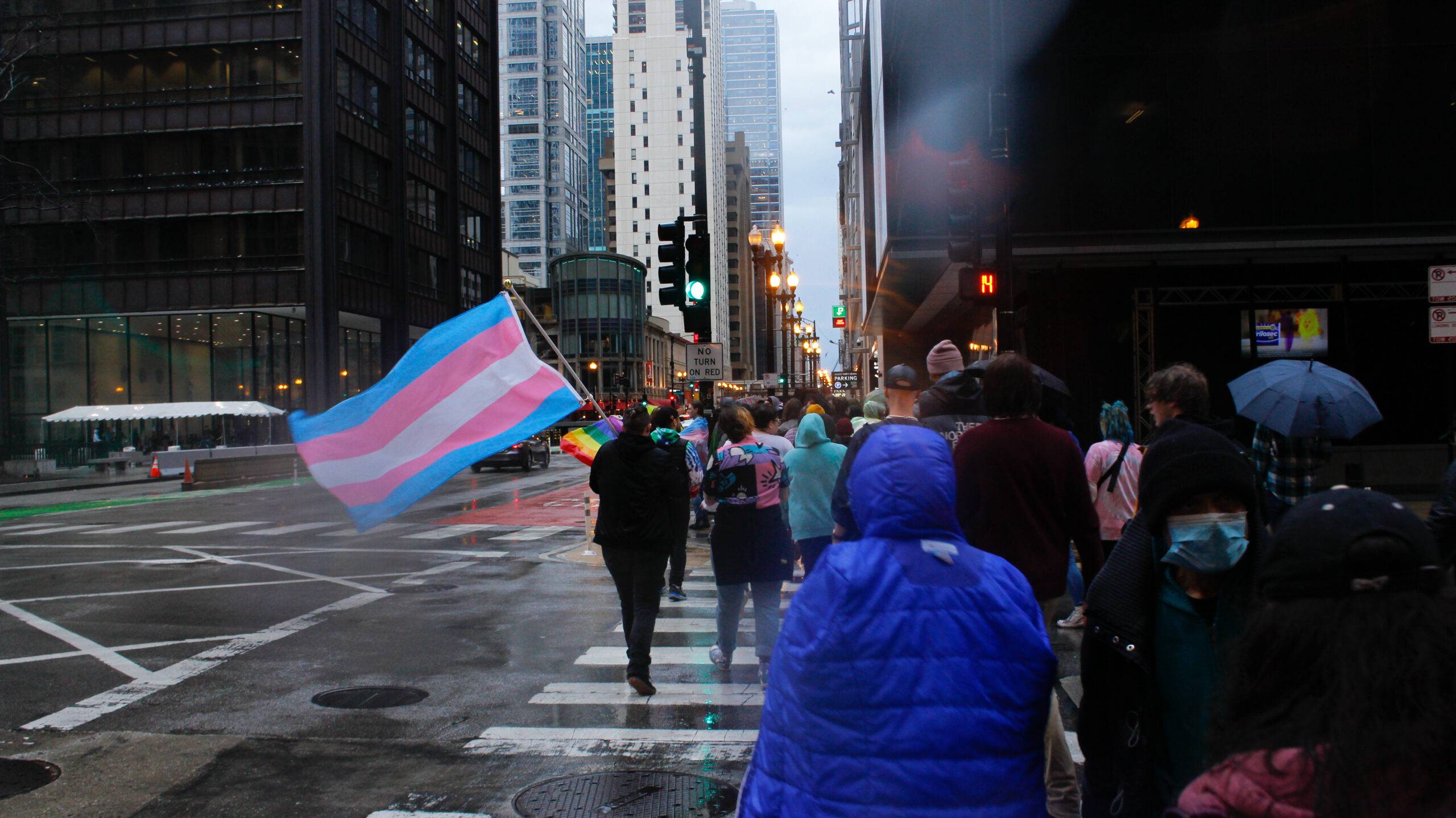“A little bit of rain isn’t going to stop us from existing. We are and we will be”, a participant of the protest chanted.
On Mar. 31, Friday evening amid a thunderstorm and hurricane warning, hundreds of people gathered in Grant Park in Chicago. The damp streets showed the first sign of rain, but the number of people was only increasing.
Placards were raised in solidarity; bright and clear against the backdrop of the city. People draped in pride flags sang. The slogan, “Trans rights are human rights”, echoed through downtown Chicago. Drivers passing by, hooray, and horns blared to show support to the people gathered.

It is really important to show up for something as intensely as trans rights, said Ashley, a 21-year-old student. “What’s happening in this country is messed up. We all need to stand up for our trans friends”.
Organized by a group of queer activists and organizations, this protest was one of the many demonstrations that happened around the country to mark International Day of Trans Visibility. “This protest is intended to be a celebration of queer joy and a kickoff for future action,” Biff Hartwell, the lead organizer of the protest said.
Earlier this March, restrictive laws against trans people were enacted in at least eleven states, including Alabama, Arizona, Arkansas, Iowa, Georgia, Mississippi, Tennessee, Kentucky, Utah, West Virginia, and South Dakota. Some of them even have banned gender-affirming care for minors. More than twenty states are considering bills to restrict or ban care this year.

“This is my life and I should have the right to choose how to live it”, said Lisa, a trans woman, who wanted to be identified by their first name. “I’m not going to stay quiet while someone else tries to make laws for me”.
According to a report published by Human Rights Campaign (HRC) Foundation, 25.7% of transgender youth live in states that have passed bans on gender-affirming care, and 24.7% of transgender youth are at risk of losing gender-affirming care.
Marching with queer people and allies was a forty-year-old woman, Sandy, the mother of a trans kid. “With the current laws, they would not have got the medical care that they deserve and need to survive”, she says “As a parent who started the treatment when they were minor, I’d be a criminal, which I don’t think I am for trying to help my child for wanting to be who they are”.
Hartwell told F Newsmagazine that this protest was one of the ways to coordinate communication to plan for direct actions to protect the queer community.
“It is very important for us to show that we have national unity, that we will not be forced back into the closet, and that we can never be eradicated,” Hartwell said. “At this moment in history, it is essential that we show the world how joyous our lives can be when we are allowed to express ourselves openly, honestly, and fully. Our happiness can never be silenced.”

According to a study published by the Stanford University School of Medicine, starting gender-affirming hormone treatment is linked to better mental health than waiting till adulthood. Gender-affirming care is medically necessary for the emotional as well as physical well-being of trans children.
“By preventing doctors from providing this care, or threatening to take children away from parents who support their child in their transition, these bills prevent transgender youth from accessing medically necessary, safe health care backed by decades of research and supported by every major medical association representing over 1.3 million US doctors”, HRC said.
“With the recent shooting that happened, I’ve seen a lot of heat towards the trans community, and that is not acceptable”, Britney, one of the participants of the protest said. “We want people to know we’re not scary, we’re normal people”.
According to HRC, at least 32 transgender and gender non-conforming people were killed in the United States in the year 2022.
“Beyond the current push to take away trans rights and especially trans rights for children, the recent shooting has doubled down on people who are espousing the eliminationist rhetoric to say that we shouldn’t exist at all”, Michael Martinez, a trans woman said.
“Their goal is to eradicate trans people and we can’t let that happen. I hope that us coming together today uplifts our community”, Lisa said. “It’s important for us to know we are not alone”.











